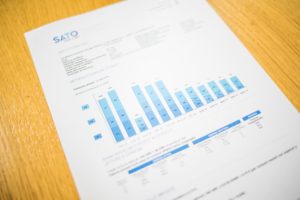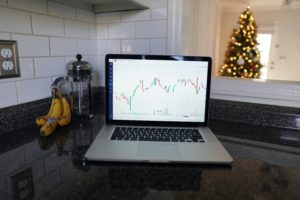(You may find this article hard when you are reading it since it includes some difficult terms and regulations. If you are not planning to open a brokerage account now, you could choose to skip this article though I don’t recommend you do it.)
Foreword
Do you know how to choose your brokerage account type? There are two account type when talking about brokerage account – Margin account and Cash account. It has been the biggest question ever for newcomers to decide which account type they should choose when opening a brokerage account. In this article, I will walk you through what they are and what you should be aware of before selecting your account type.
Margin Account

A Margin account is a brokerage account that allows users to borrow money from their brokers for purchasing securities. The maximum loan depends on how much you have deposited into your brokerage account, and it varies with different brokers.
Apart from borrowing money, you would be able to short sell securities with a Margin account. More, you would also be able to use your unsettled funds to place trades (I will explain more in the cash account part) and withdraw your fund whenever you want.
Questions for you before opening a Margin account
When opening a Margin account, there are several things you need to be aware of before you open a margin account. Here are some vital questions that you should answer before you open a margin account.
| Find out the answer of these question before you open a Margin Account❓ |
|---|
| 1️⃣ What is your stock trading strategies? (Day trading? Swing Trading? Long-term Investment?)(Long? Short?) |
| 2️⃣ Will you buy and sell your securities more than 3 times over 5 business days? |
| 3️⃣ Do your brokerage account subjected to the PDT rule? |
| 4️⃣ Are you planning to deposit more than $25,000 into your account? |
If your answer is that you will buy and sell securities more than 3 times over 5 business day, your brokerage account would be subjected to the PDT rule if you don’t have $25,000 in equity in your account.
(If you are not planning to buy and sell the same securities on the same day more than 3 times a week, you can open a Margin account directly without reading the PDT rule part.)
PDT Rule
The Pattern Day Trader (PDT) Rule is designed by the Financial Industry Regulatory Authority (FINRA) and approved by the U.S. Securities and Exchange Commission (SEC). It is given to traders who make four or more day trades in their margin account over a five business day period.
A day trade is when you purchase or short security and then sell or cover the same security on the same trading day. If you want to know more about how SEC counting a trade as a day trade, you can read this filing published by the SEC.
Investors’ / Traders’ accounts will be flagged as Pattern Day Traders by their brokers once they run afoul of the PDT rule. Their account then might be at risk of being freeze by their brokers for 90 days if they did the same thing again (day trading more than 3 times over 5 trading days).
The restriction will no longer apply to them when their account value is above $25,000. In other words, if you are planning to day trade with a small account, a cash account would be much suitable for you.
Related article (PDT avoiding): How to escape from the PDT rule with a Margin Account?
Cash Account

A Cash Account is a brokerage account that allows users to trade securities base on their buying power (Fund). Cash Account will never be subjected to the PDT rule.
However, the transaction of the cash account requires 2 days for settlement (T+2). It means that your fund (for that trade) would only be settled after 2 business days. In this period, you are not allowed to use or withdraw your fund.
More, you should always be cautious whether you would violate Regulation T or not.
How to avoid T+2: Is there a T+0 cash account?
Regulation T and Transaction Settlement Time (T+2)
Regulation T is a policy that hinders investors from selling securities that were bought with unsettled funds.
With a cash account, you are allowed to sell securities purchased with settled funds only. All securities purchased with unsettled funds should not be sold before the settlement date (T+2).
You may ask could you buy securities with unsettled funds? The answer is Yes. With a cash account, you are allowed to purchase securities with unsettled funds. However, same as above, you are not allowed to sell them until the transaction is settled.
Further reading of Regulation T: Regulation T (Investopedia)
Which account type is suitable for you?
It really depends on your strategy. If you are a short seller or day trader, I suggest you open a margin account. Otherwise, a cash account would be fine for you to either swing trade or investing stocks.
Here is a table for your reference.
| Properties/ Important things | Margin | Cash |
|---|---|---|
| Long Available💹 | ✅ | ✅ |
| Short Available📉 | ✅ | ❌ |
| Borrowing from broker💰 | ✅ | ❌ |
| Subjected to PDT rule👨🏻✈️ | ✅ | ❌ |
| Transaction Settlement (T+2)😓 | ❌ | ✅ |
| Restricted by Regulation T❓ | ❌ | ✅ |
Final Thought
We have gone through all the essential things you need to know before you choose your brokerage account type. Please make sure that you understand their difference and read through all those papers from your broker, no matter if you open a cash account or a margin account.
[Next Lesson: How to read Level 1 & Level 2 ]





